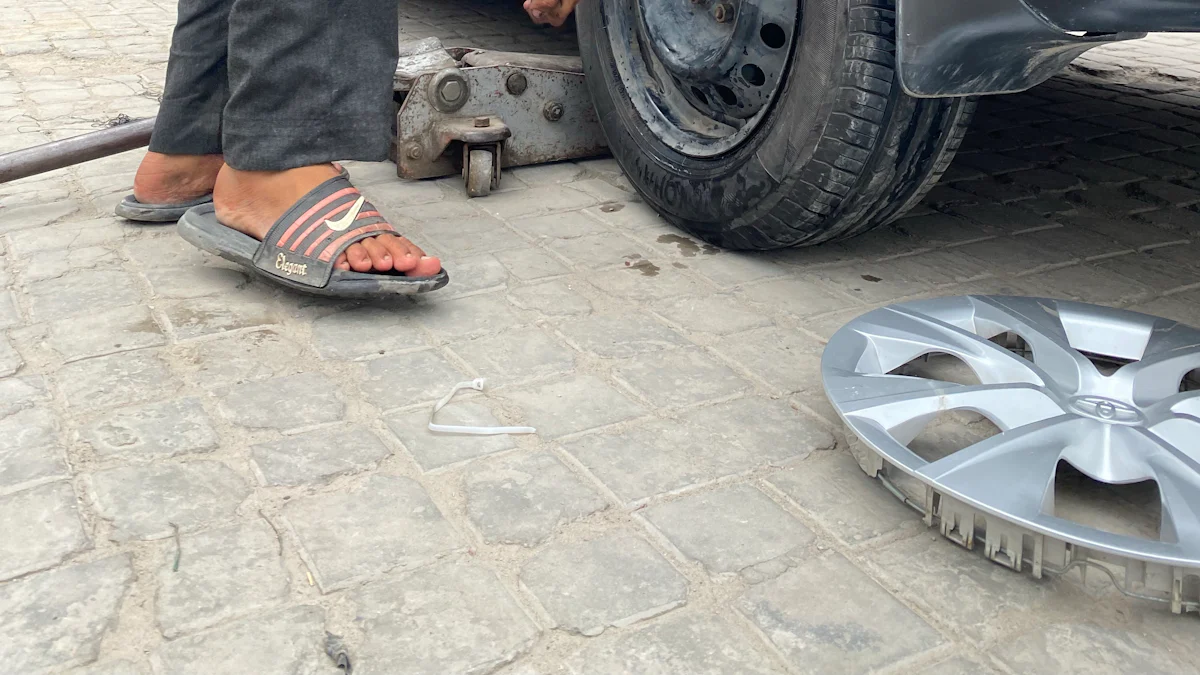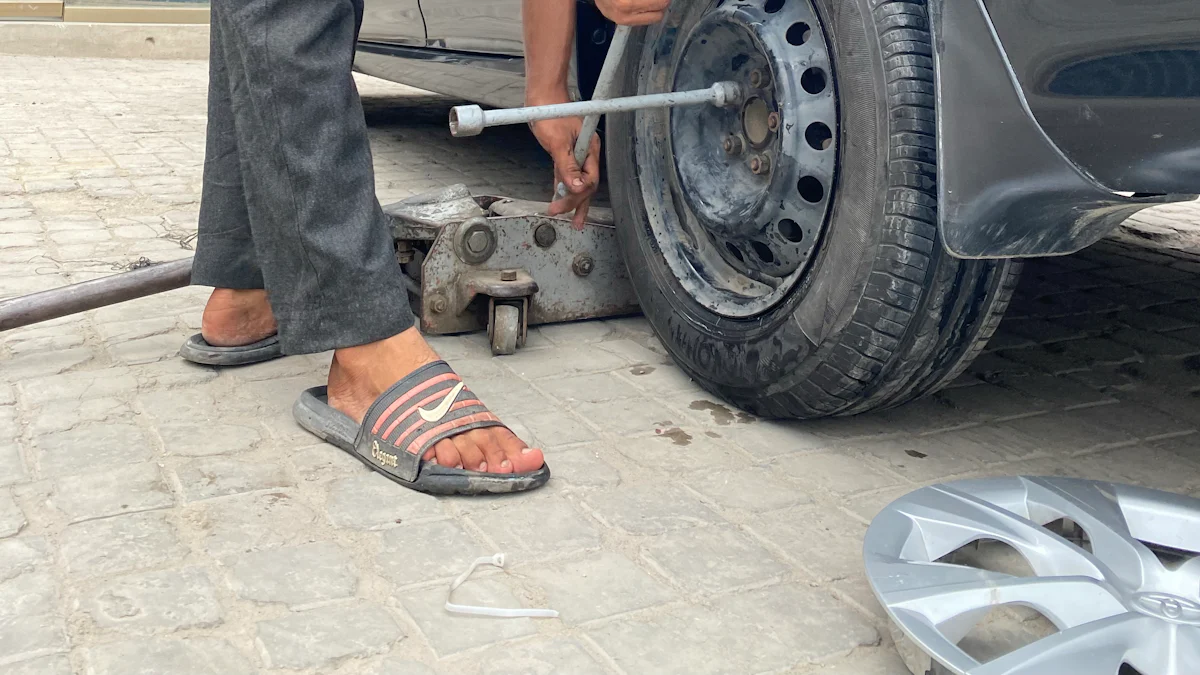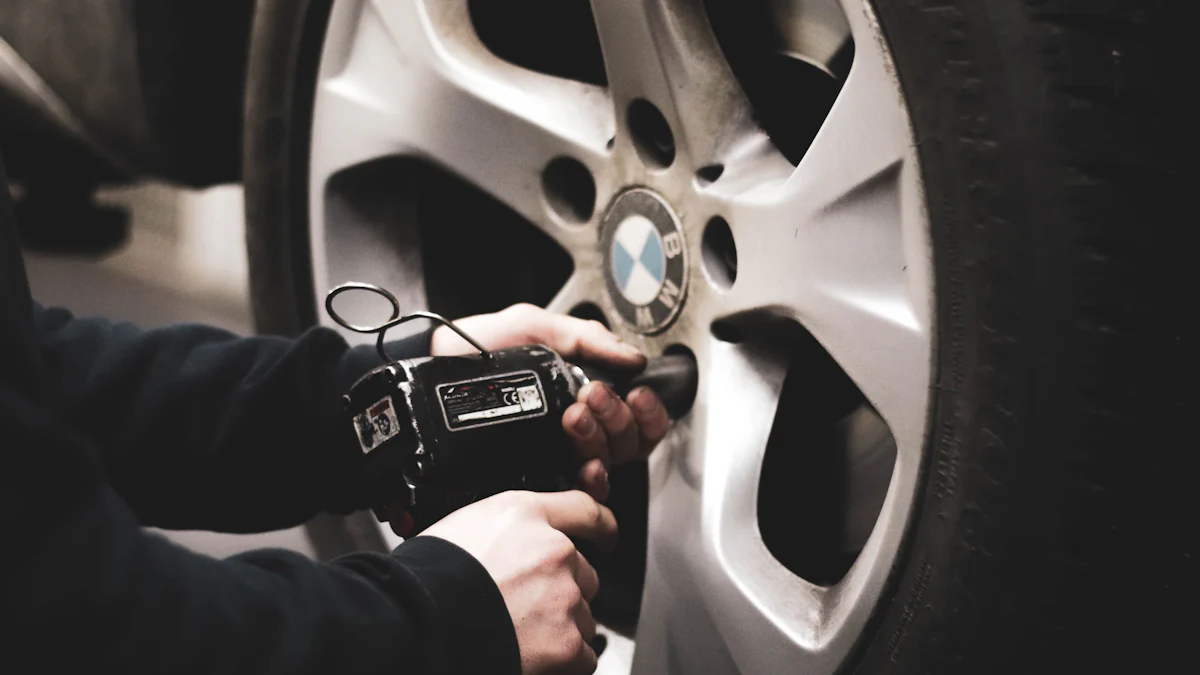
Knowing how to use a car tyre spanner is crucial for every driver. Proper usage ensures safety and efficiency during tire changes. Incorrect handling of a car tyre spanner can lead to accidents. According to the National Transportation Safety Board, improper tire maintenance causes an average of 33,000 accidents annually. This blog aims to educate readers on the correct usage of a car tyre spanner to prevent such incidents and enhance overall vehicle safety.
Understanding the Car Tyre Spanner
Types of Car Tyre Spanners
L-Shaped Spanner
The L-shaped spanner features a long handle that provides greater rotational torque. This design makes it suitable for loosening and tightening lug nuts on automobile wheels. The long handle offers additional leverage, making the task easier.
T-Shaped Spanner
The T-shaped spanner includes a crossbar for two-handed operation. This design allows for balanced force distribution and easy handling. Interchangeable sockets often come with this type, enhancing its versatility.
Cross-Shaped Spanner
The cross-shaped spanner offers four different socket sizes due to its unique design. Made from durable steel, this tool provides excellent leverage. This spanner is versatile and can handle multiple lug nut sizes, making it a valuable addition to emergency car kits.
Components of a Car Tyre Spanner
Handle
The handle is a crucial part of the car tyre spanner. It provides the necessary leverage to loosen or tighten lug nuts. Different spanners have handles of varying lengths and designs to suit specific needs.
Socket
The socket fits over the lug nuts on the wheel. It comes in various sizes to match different lug nut specifications. Some spanners feature dual socket heads for added convenience.
Extension Bar
The extension bar increases the length of the spanner’s handle. This component provides additional leverage, making it easier to apply the necessary force. Telescopic wheel spanners often include an extendable handle for adjustable length.
Preparing to Use the Car Tyre Spanner

Safety Precautions
Parking the Car Safely
Always park the car on a flat, stable surface. Engage the parking brake to prevent any movement. Turn off the engine and remove the keys from the ignition. A reflective triangle or roadside flare can help alert other drivers to your presence. Place the reflective triangle a safe distance behind the vehicle to give approaching motorists ample warning.
Using Wheel Chocks
Wheel chocks prevent the car from rolling while changing the tire. Place the chocks in front of and behind the wheel opposite the flat tire. This step ensures the car remains stationary during the process. Proper use of wheel chocks enhances safety and stability.
Wearing Protective Gear
Wearing protective gear minimizes the risk of injury. Gloves protect hands from sharp objects and provide a better grip on tools. Safety glasses shield eyes from debris. Sturdy footwear prevents foot injuries from falling objects. Always prioritize personal safety when using a car tyre spanner.
Gathering Necessary Tools
Car Tyre Spanner
A car tyre spanner is essential for loosening and tightening lug nuts. Choose a spanner that fits the lug nuts on the vehicle. Different types of spanners, such as L-shaped, T-shaped, and cross-shaped, offer various advantages. Ensure the spanner is in good condition before use.
Jack
A jack lifts the car off the ground to allow tire removal. Position the jack under the car’s designated lifting points. Use the jack handle to raise the car until the flat tire is off the ground. Always follow the manufacturer’s instructions for safe operation.
Spare Tire
A spare tire replaces the flat tire. Check the spare tire’s pressure and condition regularly. Ensure the spare tire matches the car’s specifications. Having a properly inflated spare tire ready can save time and effort during an emergency.
Step-by-Step Guide to Using a Car Tyre Spanner

Loosening the Lug Nuts
Positioning the Spanner
Place the car tyre spanner on the lug nut. Ensure the socket fits snugly over the nut. A proper fit prevents slipping and potential injury. Different types of spanners, such as L-shaped or cross-shaped, offer unique benefits in this step.
Applying Force
Apply downward force on the handle of the car tyre spanner. Use body weight for additional leverage if necessary. This technique helps in loosening tight lug nuts. Mechanics recommend using controlled, steady pressure to avoid damaging the nuts.
Loosening in a Star Pattern
Loosen the lug nuts in a star pattern. Start with one nut and move to the nut directly opposite. This method ensures even distribution of force. Even force prevents warping of the wheel and makes removal easier.
Lifting the Car
Positioning the Jack
Place the jack under the car’s designated lifting point. Refer to the vehicle’s manual for the exact location. Proper placement ensures stability during lifting. Incorrect positioning can damage the car’s frame.
Raising the Car
Use the jack handle to raise the car. Lift until the flat tire is off the ground. Ensure the car remains stable throughout the process. Stability prevents accidents and makes tire removal safer.
Removing the Lug Nuts and Tire
Fully Removing Lug Nuts
Finish removing the lug nuts by hand. Place the nuts in a safe location. Keeping track of the nuts prevents loss and ensures easy reinstallation. Different car tyre spanners may have features to hold the nuts temporarily.
Taking Off the Tire
Remove the flat tire from the wheel hub. Pull the tire straight off to avoid damaging the wheel studs. Set the flat tire aside for repair or disposal. Proper handling of the tire ensures safety and efficiency.
Installing the Spare Tire
Positioning the Spare Tire
Place the spare tire on the wheel hub. Align the holes in the spare tire with the wheel studs. Ensure the spare tire sits flush against the wheel hub. Proper alignment prevents wobbling and ensures a secure fit.
Hand-Tightening the Lug Nuts
Hand-tighten the lug nuts onto the wheel studs. Turn each lug nut clockwise until snug. This step secures the spare tire in place. Hand-tightening prevents cross-threading and ensures even pressure distribution.
Lowering the Car and Tightening the Lug Nuts
Lowering the Car with the Jack
Lower the car using the jack handle. Turn the handle slowly to bring the car back to the ground. Ensure the car rests evenly on all four tires. Stability during lowering prevents accidents and damage.
Tightening the Lug Nuts in a Star Pattern
Use the car tyre spanner to tighten the lug nuts. Follow a star pattern to ensure even force distribution. Start with one lug nut and move to the nut directly opposite. Repeat this process until all lug nuts are tight. Proper tightening prevents wheel imbalance and enhances safety.
Final Checks and Safety Tips
Ensuring All Tools Are Removed
After installing the spare tire, ensure all tools are removed from the work area. Inspect the ground around the vehicle for any stray tools or components. Leaving tools behind can cause accidents or damage to the vehicle. Double-check the car tyre spanner, jack, and wheel chocks to confirm they are securely stored.
Double-Checking the Tightness of Lug Nuts
Double-check the tightness of the lug nuts before driving. Use the car tyre spanner to ensure each lug nut is secure. Follow a star pattern to distribute the force evenly. Properly tightened lug nuts prevent wheel wobbling and enhance safety. Mechanics recommend rechecking the lug nuts after driving a short distance to ensure they remain tight.
Storing the Car Tyre Spanner and Tools
Proper storage of the car tyre spanner and other tools is essential. Keep the car tyre spanner in a designated tool kit or compartment within the vehicle. This practice ensures quick access during emergencies. A well-organized tool kit can save time and reduce stress when dealing with a flat tire.
Proper Storage Techniques
Store the car tyre spanner in a dry, clean place to prevent rust and damage. Use a tool bag or case to keep the spanner and other tools organized. Label the storage area to easily locate the car tyre spanner when needed. Regularly inspect the tools to ensure they remain in good condition. Proper maintenance extends the lifespan of the car tyre spanner and enhances its effectiveness.
Correct usage of a car tyre spanner ensures safety and efficiency during tire changes. Practicing these steps regularly helps build confidence and skill. Always remember to park the car safely, use wheel chocks, and wear protective gear. Double-check the tightness of lug nuts before driving. Proper storage of the car tyre spanner and other tools prevents rust and damage. Regular inspections of tools ensure they remain in good condition. Avoid using a “cheater bar” to prevent over-torquing and potential injuries. Always check the trunk for necessary tools before starting any tire change.
See Also
Cruising Gear: Best Quality Components for Mopeds
Discovering the Range of Stockings for Males and Females
